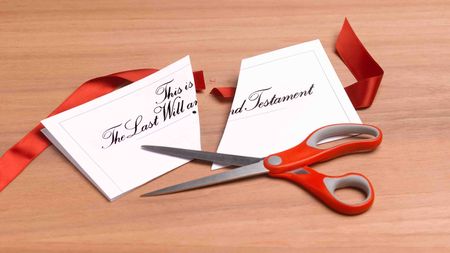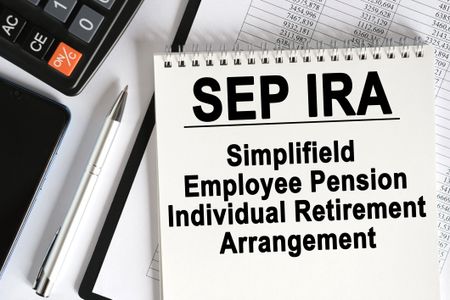Savvy Ways to Tap Your Retirement Savings
Great strategies to make your money last a lifetime.

You would think that after decades of saving money for retirement, the hard part of investing would be over. Think again. Devising a plan to turn a heap of cash into a stream of income that can last a lifetime is more art than science, and there is no one magic formula that suits every investor. "We'd all like to find one simple answer, but retirement is not simple," says Eric Sondergeld, vice-president of Limra, an insurance-industry trade group.
Consider one commonly accepted model: the 4% solution. The rule of thumb is to withdraw 4% from your portfolio to finance your first year in retirement, and increase that initial dollar amount in subsequent years to keep pace with inflation. This conservative withdrawal pace virtually assures that you won't run out of money -- one of the most frightening scenarios for retirees. But the meager income it generates -- initially $40,000 from a $1-million kitty -- may be insufficient for many retirees. Some opt to spend more early on and vow to cut back later.
Or you could buy an immediate annuity. You hand over cash to an insurance company, and in exchange it promises to send you monthly payments for life. This strategy may be good for someone who doesn't have a pension and wants a stream of guaranteed income to cover fixed expenses such as mortgage payments and utilities. One of the nice things about this approach is that you can invest the rest of your money more aggressively, knowing that your annuity payments, supplemented by Social Security benefits, will cover many living costs.

Sign up for Kiplinger’s Free E-Newsletters
Profit and prosper with the best of expert advice on investing, taxes, retirement, personal finance and more - straight to your e-mail.
Profit and prosper with the best of expert advice - straight to your e-mail.
But interest rates, which affect immediate-annuity payouts, are near historic lows, and inflation erodes the buying power of fixed-rate investments. As a result, retirees who buy an immediate annuity now may have to curtail their spending in the future or buy additional annuities to maintain their standard of living. Nowadays, a 65-year-old man investing $100,000 would receive about $690 a month for the rest of his life. Because of longer life expectancy, a 65-year-old woman would receive less -- about $635 a month. To get an idea of how much income your lump sum will produce, check out ImmediateAnnuities.com.
You may want to consider a deferred variable annuity with income guarantees, also known as "living benefits." You invest a chunk of cash in mutual fund-like accounts and take annual withdrawals -- usually of 5% or 6% of your initial investment -- regardless of how your investments perform.
Unlike immediate annuities, these deferred annuities allow you to cash out your account balance without penalty once the surrender period expires (usually from two to seven years). Or you can continue withdrawing guaranteed annual payments for as long as you like. Although fees can run as high as 2% to 3% a year (that includes both insurance charges and the costs of the underlying funds), many retirees think the price is justifiable because they can benefit from holding stock funds while at the same time maintaining a guaranteed income even if the market tanks.
Just ask Bob De Angelis. He retired from his job as an estimator with a New Jersey plumbing company in 2001 in the midst of a horrific bear market. De Angelis, 67, and his wife, Dianne, 64, started withdrawing money from their investments, but they grew increasingly skittish -- with good reason -- as the stock market continued to sag. Withdrawing money from a shrinking balance can ravage a retirement nest egg.
De Angelis's financial adviser, Nick Spagnoletti, of Macro Consulting Group, in Parsippany, N.J., suggested that his client invest in a variable annuity with an income guarantee. So De Angelis bought an annuity for $100,000 in 2004 and a second one for $108,000 in 2005. Together, the contracts are now worth about $275,000 -- even after taking 6% withdrawals ($12,000) a year starting in 2006 -- because of appreciation in the subaccounts, which include funds that invest in foreign stocks and small-company stocks. "His most-aggressive investments are protected by the income guarantees," says Spagnoletti, who admits that he would never have recommended variable annuities before 2000. "The criticism of them was well deserved for years. They were expensive, and you didn't get a lot for your money. All that has changed with guaranteed living benefits."
De Angelis withdraws $12,000 a year to supplement his pension and the Social Security benefits that he and his wife receive. He says the annuities have bought him peace of mind and have helped provide a comfortable retirement. That includes a new home in tax-friendly Lewes, Del., and a three-month trip to Florida each winter.
Genworth Financial recently introduced a new variable annuity that lets you either start taking payments now or receive larger payouts later. You are guaranteed annual payments of at least 7% of your initial investment if you are 60 to 69 years old when you start withdrawing money; 8% if you are 70 to 74 years old; and 9% if you are 75 or older. You may qualify for even higher payouts if your investment choices perform better than the guaranteed withdrawal amounts. "For someone who is 75 or older, 9% is an unbelievably good deal," says Spagnoletti. But keep in mind that with this annuity, you can't change your mind and get your money back once you start taking payouts.
Tax consequences
Remember, too, that you will generally have to pay income taxes on your annuity payouts. Annuity earnings grow tax-deferred, but payouts, whether from fixed-rate or variable annuities, are either partially or fully taxed at ordinary income-tax rates. If held in a taxable account, the portion of each payment that represents a return of principal is tax-free. Annuity payouts from IRAs, like any withdrawals from IRAs and other retirement accounts (except Roths), are fully taxable at ordinary tax rates.
If annuities aren't for you, you can still make do with traditional investments. But don't think you have to undergo an extreme portfolio makeover just because you have retired. "The act of retirement is not a defining point to start getting out of stocks and into fixed income," says Roger Gibson, a financial planner near Pittsburgh and author of Asset Allocation: Balancing Financial Risk. "The portfolio balance you have two or three years before retirement is probably the portfolio balance you should have two or three years after retirement."
As always, diversification is paramount. New retirees should have at least 50% of their portfolio in stocks or stock funds to protect against future inflation. Generally, you should invest about half of your stock money in shares of large companies, split between growth and value stocks. Put roughly 25% in foreign stocks, and place the rest in shares of small and midsize companies.
The other major chunk of your portfolio should be in bonds or bond funds. Here, the mix should include corporate IOUs and Treasuries with short-term and medium-term maturities (long-term bonds aren't paying enough to justify their risks). If you're willing to take a bit more risk, you can add a high-yield, or junk, bond fund and an overseas bond fund (see our recommended portfolio using Kiplinger 25 funds).
To cut volatility, add some investments that don't move in sync with stocks and bonds. Two of our favorites are Merger fund (symbol MERFX; 800-343-8959), which invests in the stocks of takeover targets, and Fidelity Floating Rate High Income (FFRHX; 800-343-3548), which invests in bank loans whose interest rates reset every three months or so. As a result, Floating Rate performs well even when rising interest rates hurt most bond funds. It recently yielded 6.4%. Over the past ten years to June 1, Merger fund gained an annualized 7%, and since its start, in 1989, it has experienced only one down year.
Safety valve
Having a pension or other guaranteed source of income, such as an annuity, enables you to invest more aggressively in your other retirement accounts. Roy Pace, who retired four years ago from a job as a project engineer at Alcoa, keeps 60% of his IRA in stock funds, including substantial holdings in international and emerging-markets funds. A pension based on 35 years of service "gives me the luxury of going to Tahiti without worrying about how I'm going to pay for some things," says Pace, 61, who lives in Saluda, Va., near the Chesapeake Bay, with his wife, Glenna, 61.
Earning even a modest amount from a part-time job in retirement, as Pace does, can have a substantial impact on your income. "It can be very significant in terms of reducing withdrawal needs from your portfolio in the critical early years," says Michael Kitces, a financial planner in Columbia, Md. For example, he says, a part-time job producing $20,000 a year is the equivalent of having an extra $500,000 in savings, assuming a 4% annual withdrawal rate.
If you are uneasy about going it alone, many investment companies offer services to help manage your retirement income. When Pace rolled over about $300,000 in his 401(k) this year to a T. Rowe Price IRA, he got personalized financial advice about asset allocation. And he will receive annual updates as part of the firm's advice program, which charges a one-time fee of $250 for accounts of less than $100,000.
Fidelity Investments provides a free Retirement Income Planner tool to help you develop a comprehensive retirement budget. The company (www.fidelity.com) also offers a free Income Management Account service, which lets you consolidate multiple sources of income into one account. You can draw on it to pay bills and to write yourself a regular paycheck.
If you don't want the hassle of building a retirement investment portfolio of your own, you can select a ready-made retirement-income fund. Typically, these are funds of funds that either hold a static mix of stock and bond funds or gradually become more conservative as you get further into retirement (see Retire on Autopilot for a selection of funds with low fees and different investing strategies).
Sample portfolio: Best funds for retirees
Time to draft a 30-year plan. This starter kit gives you a diversified portfolio with moderate risk using the Kiplinger 25, the list of our favorite no-load mutual funds. Add to or subtract from the stock funds according to your appetite for volatility. As you grow older, gradually reduce your stake in stock funds and boost your allocation to bond funds -- especially to Dodge & Cox Income because it has a broad mix of high-quality bonds. Generally, keep at least 20% of your portfolio in stock funds no matter what your age.
In-retirement portfolio:
10% Selected American Shares (SLASX)
10% Vanguard Primecap Core (VPCCX)
10% T. Rowe Price Equity Income (PRFDX)
10% Champlain Small Company (CIPSX)
10% Dodge & Cox International Stock (DODFX)
10% Loomis Sayles Bond (LSBRX)*
25% Dodge & Cox Income (DODIX)*
10% Fidelity Floating Rate High Income (FFRHX)
5% Merger (MERFX)
*Investors in high tax brackets should replace these funds with Fidelity Intermediate Muni Income.
Get Kiplinger Today newsletter — free
Profit and prosper with the best of Kiplinger's advice on investing, taxes, retirement, personal finance and much more. Delivered daily. Enter your email in the box and click Sign Me Up.
-
 RMD Deadline April 1: Five Tax Strategies to Manage Your 2025 Income
RMD Deadline April 1: Five Tax Strategies to Manage Your 2025 IncomeTaxable Income The April 1, 2025, deadline for required minimum distributions (RMDs) is fast approaching for retirees who turned 73 in 2024.
By Kelley R. Taylor Published
-
 Rising AI Demand Stokes Undersea Investments
Rising AI Demand Stokes Undersea InvestmentsThe Kiplinger Letter As demand soars for AI, there’s a need to transport huge amounts of data across oceans. Tech giants have big plans for new submarine cables, including the longest ever.
By John Miley Published
-
 What Does Medicare Not Cover? Eight Things You Should Know
What Does Medicare Not Cover? Eight Things You Should KnowHealthy Living on a Budget Medicare Part A and Part B leave gaps in your healthcare coverage. But Medicare Advantage has problems, too.
By Donna LeValley Published
-
 15 Reasons You'll Regret an RV in Retirement
15 Reasons You'll Regret an RV in RetirementMaking Your Money Last Here's why you might regret an RV in retirement. RV-savvy retirees talk about the downsides of spending retirement in a motorhome, travel trailer, fifth wheel or other recreational vehicle.
By Bob Niedt Published
-
 457 Plan Contribution Limits for 2025
457 Plan Contribution Limits for 2025Retirement plans There are higher 457 plan contribution limits for state and local government workers in 2025. That's good news for state and local government employees
By Kathryn Pomroy Last updated
-
 13 Smart Estate Planning Moves
13 Smart Estate Planning Movesretirement Follow this estate planning checklist for you (and your heirs) to hold on to more of your hard-earned money.
By Janet Kidd Stewart Last updated
-
 Medicare Basics: 11 Things You Need to Know
Medicare Basics: 11 Things You Need to KnowMedicare There's Medicare Part A, Part B, Part D, Medigap plans, Medicare Advantage plans and so on. We sort out the confusion about signing up for Medicare — and much more.
By Catherine Siskos Last updated
-
 The Seven Worst Assets to Leave Your Kids or Grandkids
The Seven Worst Assets to Leave Your Kids or Grandkidsinheritance Leaving these assets to your loved ones may be more trouble than it’s worth. Here's how to avoid adding to their grief after you're gone.
By David Rodeck Last updated
-
 SEP IRA Contribution Limits for 2025
SEP IRA Contribution Limits for 2025SEP IRA A good option for small business owners, SEP IRAs allow individual annual contributions of as much as $69,000 in 2024 and $70,000 in 2025..
By Jackie Stewart Last updated
-
 Roth IRA Contribution Limits for 2025
Roth IRA Contribution Limits for 2025Roth IRAs Roth IRA contribution limits have gone up. Here's what you need to know.
By Jackie Stewart Last updated